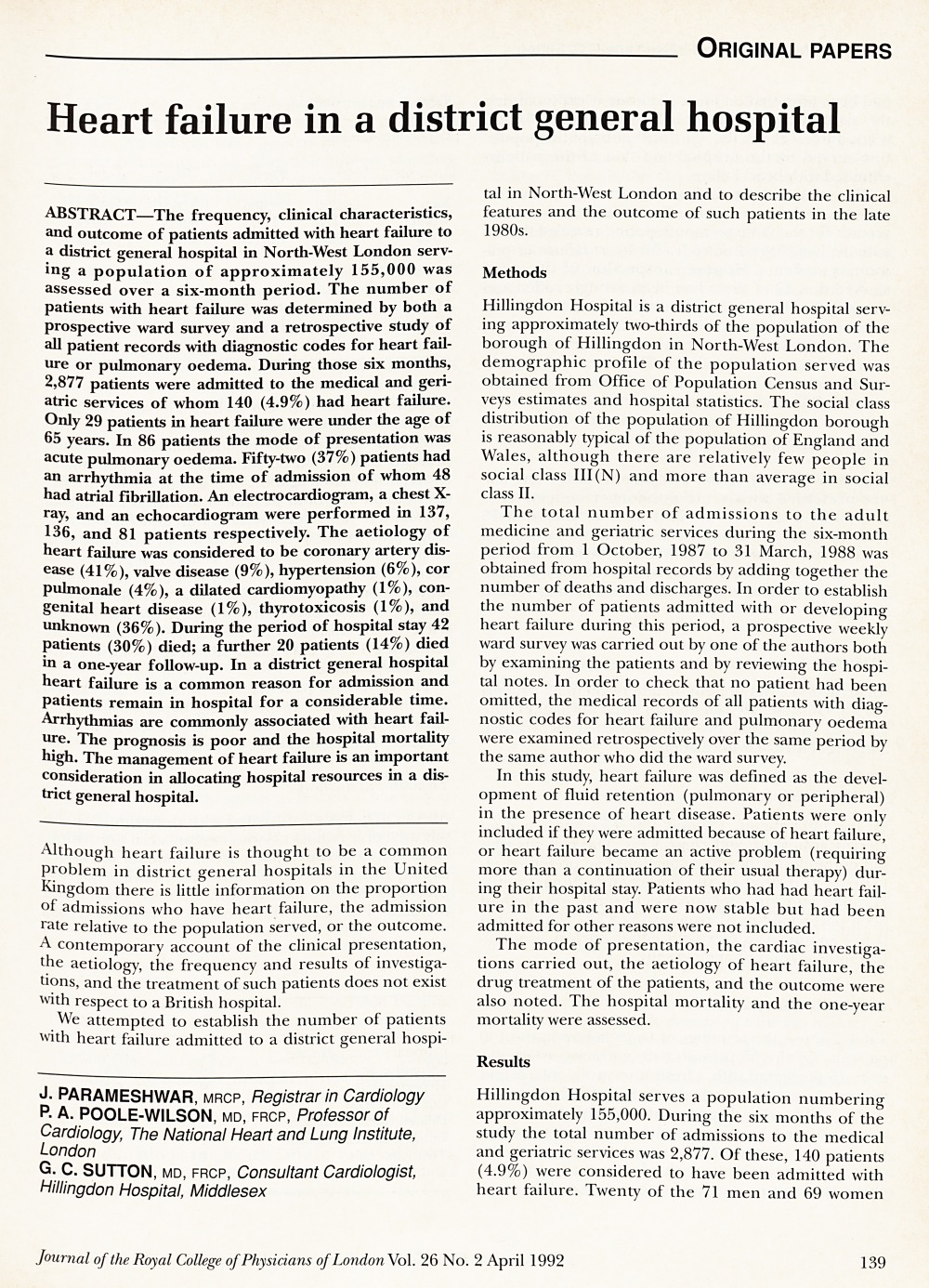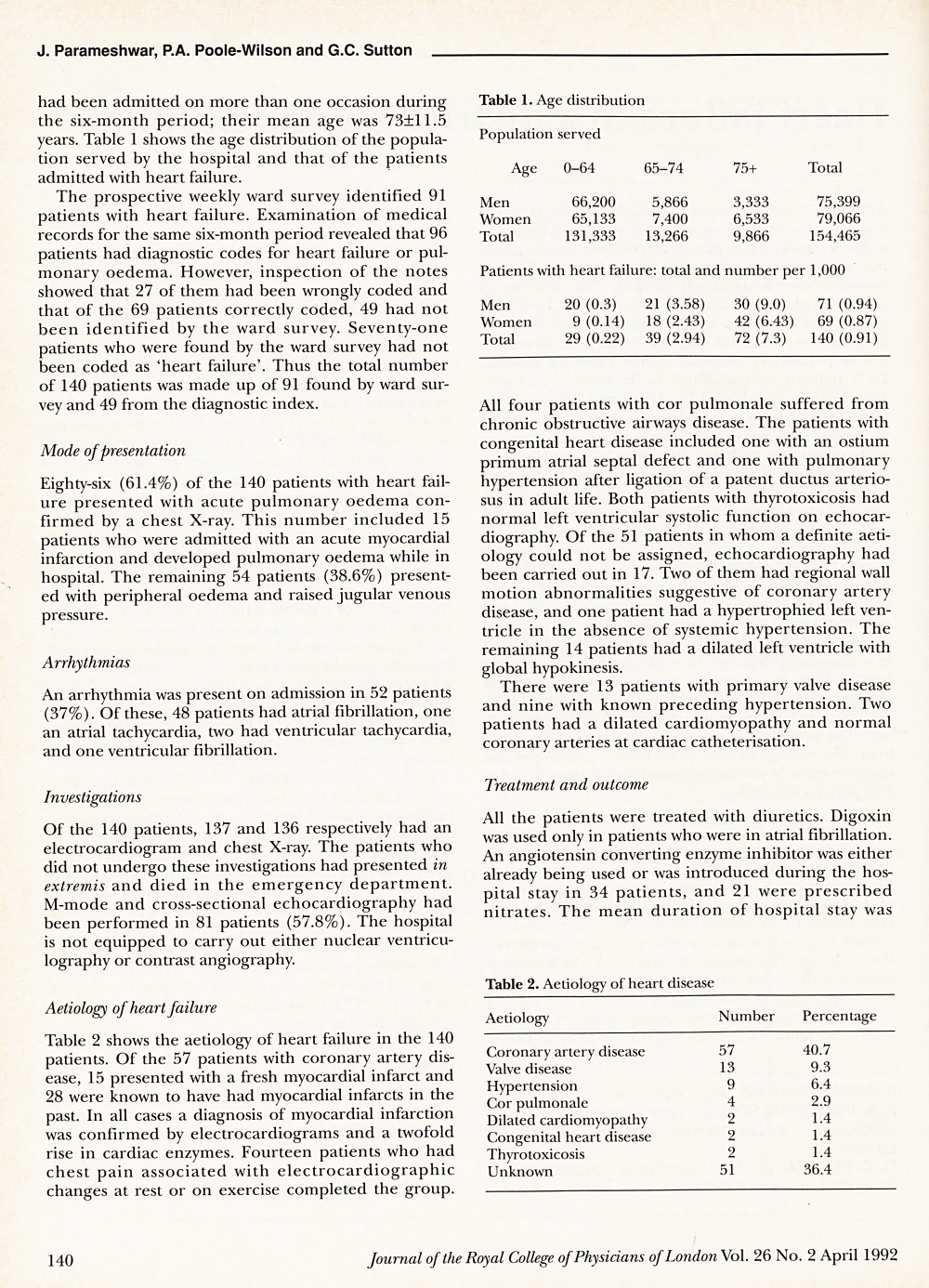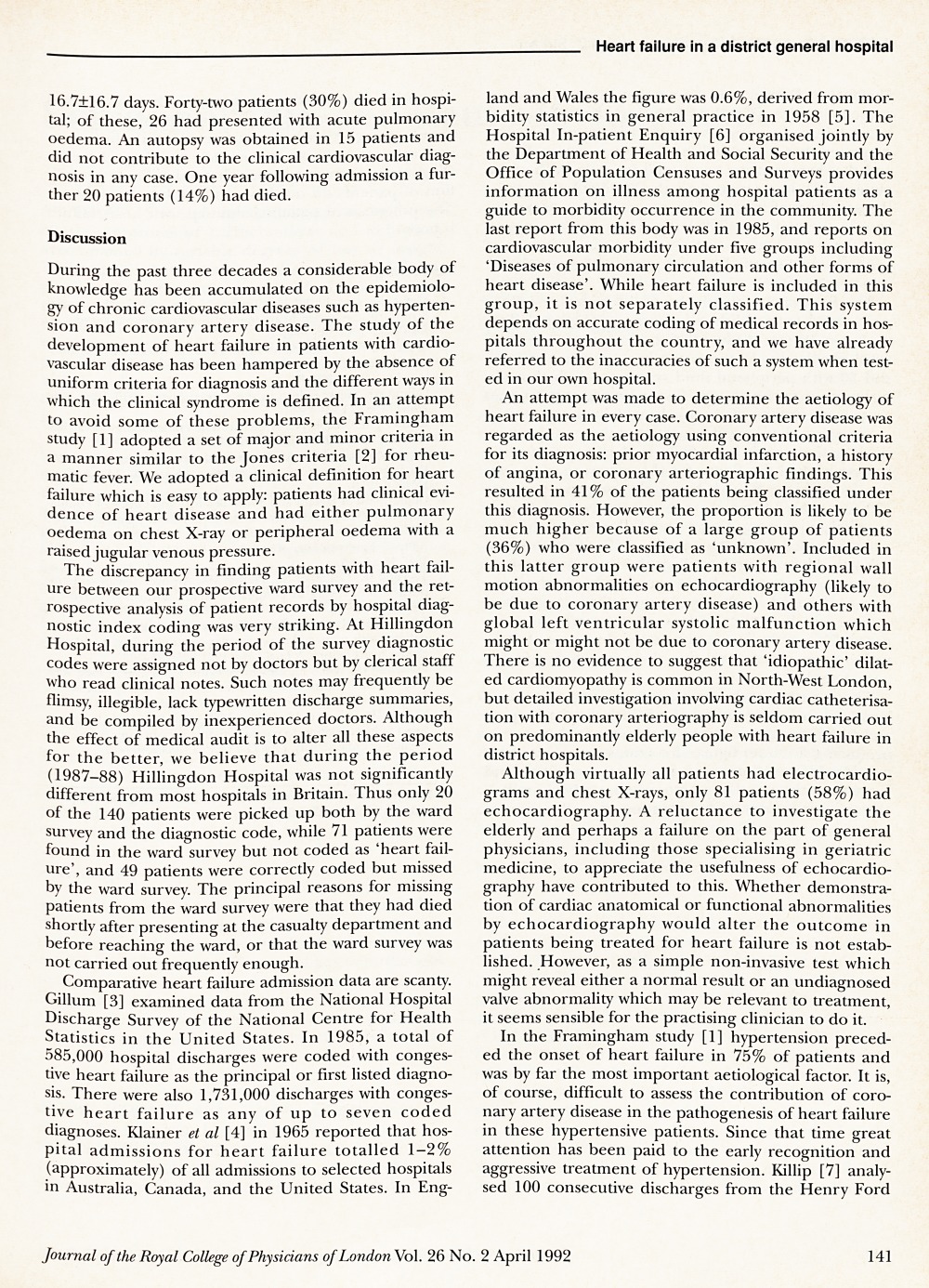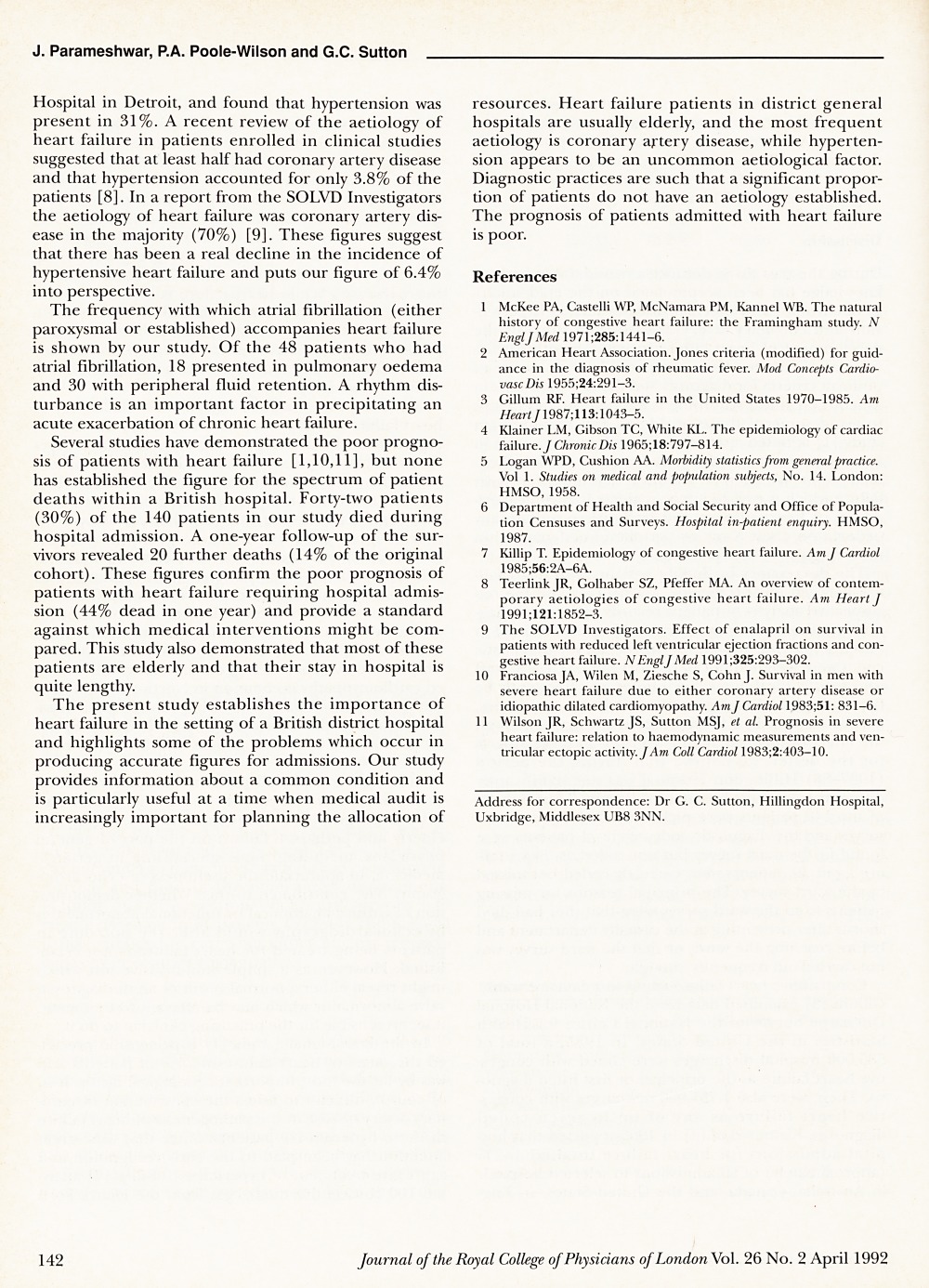Abstract
The frequency, clinical characteristics, and outcome of patients admitted with heart failure to a district general hospital in North-West London serving a population of approximately 155,000 was assessed over a six-month period. The number of patients with heart failure was determined by both a prospective ward survey and a retrospective study of all patient records with diagnostic codes for heart failure or pulmonary oedema. During those six months, 2,877 patients were admitted to the medical and geriatric services of whom 140 (4.9%) had heart failure. Only 29 patients in heart failure were under the age of 65 years. In 86 patients the mode of presentation was acute pulmonary oedema. Fifty-two (37%) patients had an arrhythmia at the time of admission of whom 48 had atrial fibrillation. An electrocardiogram, a chest X-ray, and an echocardiogram were performed in 137, 136, and 81 patients respectively. The aetiology of heart failure was considered to be coronary artery disease (41%), valve disease (9%), hypertension (6%), cor pulmonale (4%), a dilated cardiomyopathy (1%), congenital heart disease (1%), thyrotoxicosis (1%), and unknown (36%). During the period of hospital stay 42 patients (30%) died; a further 20 patients (14%) died in a one-year follow-up. In a district general hospital heart failure is a common reason for admission and patients remain in hospital for a considerable time. Arrhythmias are commonly associated with heart failure. The prognosis is poor and the hospital mortality high. The management of heart failure is an important consideration in allocating hospital resources in a district general hospital.
Full text
PDF



Contributor Information
J. Parameshwar, Registrar in Cardiology, The National Heart and Lung Institute, London
P. A. Poole-Wilson, Professor of Cardiology, The National Heart and Lung Institute, London
G. C. Sutton, Consultant Cardiologist, Hillingdon Hospital, Middlesex


